
PROGRAMMING AND COMPUTER SOFTWARE
Scope & Guideline
Elevating the Standards of Programming Knowledge Since 1978
Introduction
Aims and Scopes
- Software Development and Engineering:
The journal emphasizes research in software development methodologies, tools, and practices, including agile development, software testing, and requirements engineering. - Algorithms and Computational Methods:
A significant focus is placed on the design, analysis, and implementation of algorithms, particularly in the context of optimization, numerical methods, and computational complexity. - Artificial Intelligence and Machine Learning:
Research in AI and ML is prominent, covering topics like neural networks, deep learning, and machine learning applications in various domains including image processing and data analysis. - Computer Algebra Systems:
The journal publishes work related to computer algebra, symbolic computation, and their applications in solving complex mathematical problems. - Data Science and Analytics:
There is a growing emphasis on data science, including methods for data mining, machine learning applications, and statistical analysis techniques. - Cybersecurity and Cryptography:
Research on software security, vulnerabilities, and cryptographic methods is a core area, reflecting the increasing importance of secure software systems.
Trending and Emerging
- Machine Learning and Deep Learning Applications:
There is a substantial increase in research related to machine learning and deep learning, particularly their applications in image processing, natural language processing, and predictive analytics. - Cybersecurity Innovations:
With the growing concern over data breaches and cyber threats, innovative research in cybersecurity practices, including secure coding and cryptographic techniques, has gained traction. - Cloud Computing and Distributed Systems:
Research focusing on cloud computing architectures, distributed ledger technologies, and edge computing solutions is on the rise, driven by the demand for scalable and efficient systems. - Human-Computer Interaction and Usability:
Emerging studies on user experience, usability testing, and human-computer interaction design are becoming increasingly significant, as software applications prioritize user-centered design. - Quantum Computing and Advanced Algorithms:
There is a growing interest in quantum computing, with research exploring its implications for algorithms and software development, reflecting a frontier in computational capabilities.
Declining or Waning
- Traditional Software Engineering Models:
There has been a noticeable decrease in the number of publications focusing on traditional software engineering models, as newer methodologies such as agile and DevOps gain prominence. - Static Analysis Techniques:
Although static analysis remains important, the volume of research dedicated to basic static analysis methods has diminished, possibly due to advancements in dynamic analysis and machine learning techniques. - Classic Database Management Systems:
Research on classical database systems and their optimization techniques is less frequent, overshadowed by the rise of NoSQL databases and big data frameworks. - Basic Computer Graphics Techniques:
Publications on fundamental computer graphics techniques have declined, as the field has moved towards more complex and advanced rendering techniques. - Legacy Programming Languages:
There is a waning interest in research focused on legacy programming languages, as newer languages and paradigms become more relevant in current software development practices.
Similar Journals
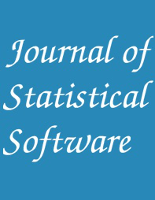
Journal of Statistical Software
Connecting researchers with the latest in statistical software innovations.Journal of Statistical Software, published by the esteemed Journal Statistical Software, stands as a premier platform for the dissemination of cutting-edge research in the fields of statistical software development, methodologies, and applications. With an impressive impact factor and consistently ranking in the Q1 quartile for Software, Statistics and Probability, and Statistics, Probability and Uncertainty as of 2023, this journal is recognized globally for its scholarly contributions and innovative content. The journal has been an Open Access publication since 1996, facilitating unrestricted access to high-quality research for a diverse audience, including researchers, professionals, and students. As the journal converges into its 28th volume in 2024, it continues to maintain a strong presence in key academic rankings—evidenced by its stellar Scopus rank, where it is placed in the top 5% of journals in its field. Located at UCLA Department of Statistics, in Los Angeles, this journal is dedicated to fostering the advancement of statistical software and its role in enhancing scientific research across multiple disciplines.

ACM Communications in Computer Algebra
Innovating Computational Mathematics and TheoryACM Communications in Computer Algebra is an influential peer-reviewed journal published by the Association for Computing Machinery (ACM), dedicated to advancing the field of computer algebra. With its ISSN 1932-2232 and E-ISSN 1932-2240, the journal serves as a crucial platform for disseminating innovative research that intersects computational mathematics and theoretical computer science. As evidenced by its category quartiles, it holds a notable Q3 ranking in both Computational Mathematics and Computational Theory and Mathematics for the year 2023, reflecting its commitment to fostering rigorous scholarship. Although it remains a non-open access publication, the journal provides vital insights and findings that contribute significantly to the academic dialogue within these domains. Researchers, professionals, and students alike can rely on its curated content to stay abreast of advancements, applications, and methodologies pertinent to computer algebra, especially throughout its publishing epochs from 2011 to 2021, and resuming in 2023 through 2024.

JOURNAL OF EXPERIMENTAL & THEORETICAL ARTIFICIAL INTELLIGENCE
Advancing Knowledge in AI and Software EngineeringThe Journal of Experimental & Theoretical Artificial Intelligence, published by Taylor & Francis Ltd, serves as a premier platform for researchers and professionals interested in advancing the fields of artificial intelligence, software engineering, and theoretical computer science. Established in 1989, this peer-reviewed journal features original research and comprehensive reviews that explore innovative methodologies and emerging trends within these dynamic domains. With an impact factor that reflects its relevance, the journal currently ranks in Q3 across its categories, affirming its contributions to the scholarly community. The journal's commitment to quality and rigor invites submissions that bridge experimental and theoretical frameworks, thus fostering a deeper understanding of AI's applications and implications. Researchers and students can access insightful articles that drive critical discussions and inspire future work, making this journal an essential resource for anyone looking to delve into the complexities of artificial intelligence and its surrounding disciplines.

Bulletin of the South Ural State University Series-Mathematical Modelling Programming & Computer Software
Fostering Collaboration in Mathematical Modeling and Software DevelopmentThe Bulletin of the South Ural State University Series-Mathematical Modelling Programming & Computer Software is a distinguished academic journal focusing on the interdisciplinary fields of mathematical modeling, programming, and software development. Published by the SOUTH URAL STATE UNIVERSITY, SCIENTIFIC RESEARCH DEPARTMENT, this journal serves as a platform for the dissemination of innovative research findings, methodologies, and applications in computational mathematics and related disciplines. With its ISSN 2071-0216 and E-ISSN 2308-0256, it has garnered attention within the research community, reflected in its rankings within the Q4 quartile across multiple categories in 2023, including Computational Mathematics and Software. Although it operates under an open access model, the journal emphasizes the importance of high-quality, peer-reviewed content to advance research education and practice in the Russian Federation and beyond. Researchers, professionals, and students are encouraged to contribute and access valuable insights, fostering collaboration among disciplines spanning mathematical theory, computational methods, and software development.
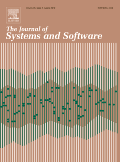
JOURNAL OF SYSTEMS AND SOFTWARE
Elevating Academic Discourse in Computer Science.JOURNAL OF SYSTEMS AND SOFTWARE, published by Elsevier Science Inc, is a premier academic journal that serves as a vital platform for the dissemination of cutting-edge research in the fields of software engineering, information systems, and hardware architecture. With an impressive impact factor and consistently ranking in the Q1 category across several relevant sectors, including hardware and architecture (ranked 33rd out of 177), information systems (ranked 72nd out of 394), and software (ranked 75th out of 407) as of 2023, this journal is recognized for its rigorous peer-review process and high-quality publications. Established in 1979, the journal has become an essential resource for researchers, professionals, and students looking to stay abreast of the latest advancements and emerging trends in systems and software. While the journal does not currently operate under an open-access model, it ensures wide visibility through its indexed publications and is dedicated to advancing scholarly discourse in computer science. With contributions from leading experts in the field, JOURNAL OF SYSTEMS AND SOFTWARE continues to shape the landscape of software and systems research.
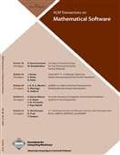
ACM TRANSACTIONS ON MATHEMATICAL SOFTWARE
Transforming mathematical research with innovative software applications.Welcome to the ACM Transactions on Mathematical Software, a prestigious journal published by the Association for Computing Machinery (ACM). With an ISSN of 0098-3500 and an E-ISSN of 1557-7295, this journal has been at the forefront of innovation in the field since its inception in 1975. It serves as a critical platform for researchers, professionals, and students, facilitating the dissemination of advanced mathematical techniques and software developments. The journal is recognized for its outstanding impact, evidenced by its Q1 classification in Applied Mathematics and Q2 in Software for 2023, along with an impressive Scopus ranking placing it in the 85th percentile for Applied Mathematics and the 58th percentile for Computer Science. Our objective is to publish high-quality research that explores new methodologies in mathematical software and their applications, driving the field forward. Although not an open access journal, the relevance and rigor of the content ensure that it remains a valuable resource in mathematical and computational sciences. Join us in exploring the latest in mathematical software and contribute to shaping future advancements.
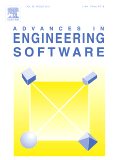
ADVANCES IN ENGINEERING SOFTWARE
Connecting Scholars to the Latest in Engineering Software Advances.ADVANCES IN ENGINEERING SOFTWARE, published by Elsevier Science Ltd, stands at the forefront of interdisciplinary research in the realms of engineering and software development. With an impressive impact factor reflected in its Q1 and Q2 rankings in the Engineering (Miscellaneous) and Software categories, respectively, this journal serves as an essential platform for researchers and practitioners alike to disseminate innovative findings and methodologies from 1982 to the present. Strategically positioned within the United Kingdom, it engages scholars, professionals, and students by publishing high-quality articles that emphasize advancements in software applications related to engineering challenges. Although it does not currently offer open access, the journal remains highly regarded within the academic community, consistently attracting impactful research and maintaining a commendable Scopus ranking within the top tiers of both general engineering and software disciplines. Explore the latest contributions to enhance your knowledge and stay updated on trailblazing developments in engineering software.

International Journal of Software Science and Computational Intelligence-IJSSCI
Driving Progress in Algorithm Development and Machine LearningInternational Journal of Software Science and Computational Intelligence (IJSSCI) is a prominent academic journal published by IGI Global, dedicated to advancing the fields of software science and computational intelligence. With its ISSN 1942-9045 and E-ISSN 1942-9037, IJSSCI offers a platform for researchers, practitioners, and students to disseminate innovative research findings, theoretical advancements, and practical applications in areas such as algorithm development, machine learning, and software engineering. Although the journal currently does not operate under an open access model, its rigorous peer-review process ensures high-quality publications that contribute significantly to the academic discourse. Based in Hershey, PA, IJSSCI is recognized for its commitment to fostering collaboration among professionals in the technology and computer science fields, making it an essential resource for those looking to stay at the forefront of software science advancements.

CONSTRAINTS
Navigating the Frontiers of Discrete Mathematics and AICONSTRAINTS, an esteemed journal published by Springer, specializes in the interrelated domains of Artificial Intelligence, Computational Theory and Mathematics, Discrete Mathematics and Combinatorics, and Software. With an ISSN of 1383-7133 and E-ISSN of 1572-9354, this journal provides a critical platform for disseminating cutting-edge research and methodologies aimed at addressing complex challenges in these rapidly evolving fields. Located in the Netherlands, the journal's rigorous selection process is reflected in its impressive categorizations, achieving Q2 and Q3 rankings in various Scopus categories for 2023. This positions it among the top quartiles in its respective fields, making it a vital resource for scholars and practitioners seeking to stay at the forefront of innovation. Researchers and students alike will benefit from the insightful contributions within its pages, making CONSTRAINTS a pivotal journal for those dedicated to advancing knowledge and application in computational and artificial intelligence spheres.
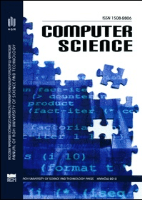
Computer Science-AGH
Empowering Researchers with Accessible InsightsComputer Science-AGH, published by the AGH University of Science & Technology Press in Poland, is an esteemed open access journal that has been disseminating high-quality research since 2004. With ISSN 1508-2806 and E-ISSN 2300-7036, this journal focuses on a diverse range of areas within the computer science discipline, including but not limited to Artificial Intelligence, Computational Theory, Computer Graphics, and Networks. While it currently holds a Q4 ranking across several categories as of 2023, it actively promotes research that contributes to the academic community's understanding and evolution in the field. The journal's commitment to open access ensures that vital research is accessible to a wider audience, fostering collaboration and innovation. With its comprehensive focus and strategic publication goals, Computer Science-AGH plays a crucial role in advancing the frontiers of computer science research and education, making it an invaluable resource for researchers, professionals, and students alike.